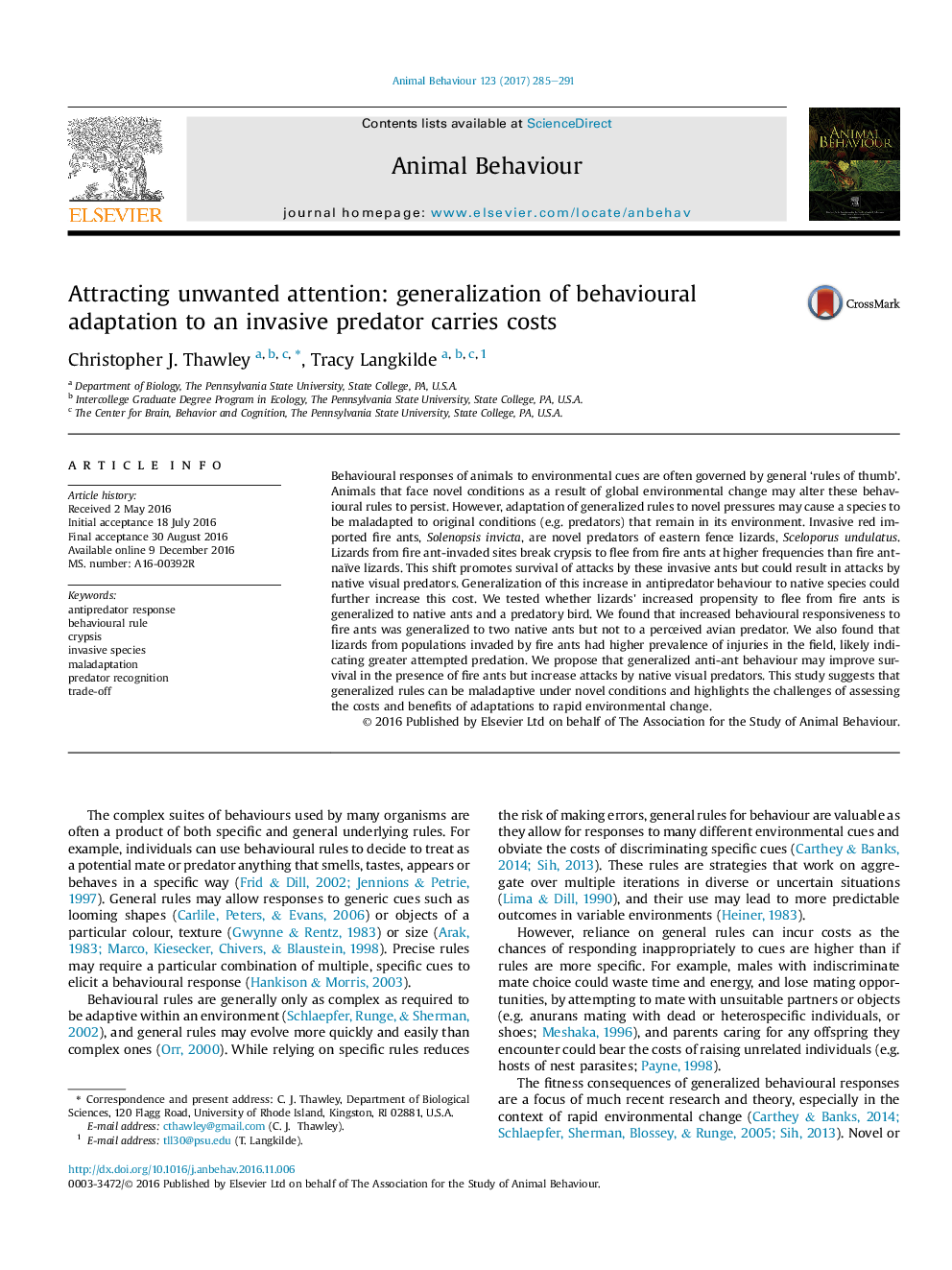ترجمه فارسی عنوان مقاله
توجه ناخواسته: تعمیم سازگاری رفتاری با یک شکارچی تهاجمی، هزینهای است
عنوان انگلیسی
Attracting unwanted attention: generalization of behavioural adaptation to an invasive predator carries costs
| کد مقاله | سال انتشار | تعداد صفحات مقاله انگلیسی |
|---|---|---|
| 133959 | 2017 | 7 صفحه PDF |
منبع

Publisher : Elsevier - Science Direct (الزویر - ساینس دایرکت)
Journal : Animal Behaviour, Volume 123, January 2017, Pages 285-291

